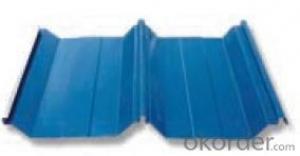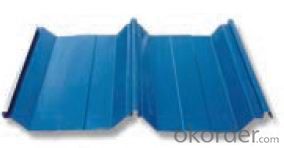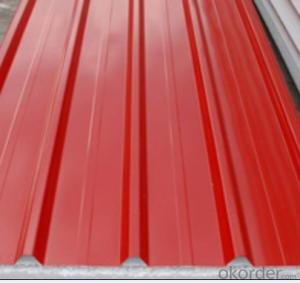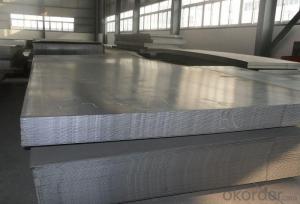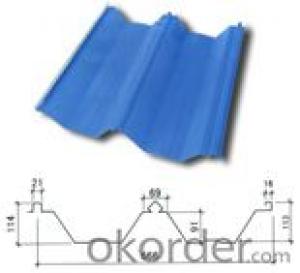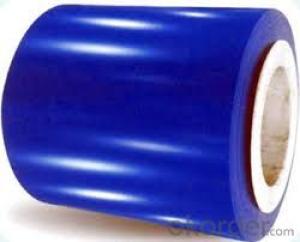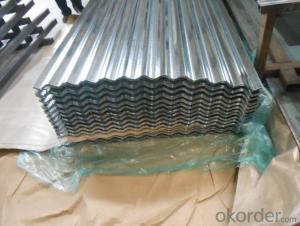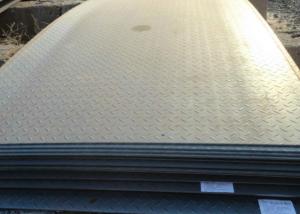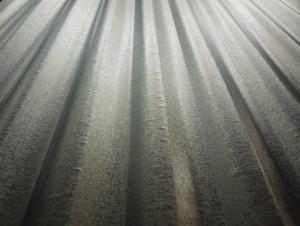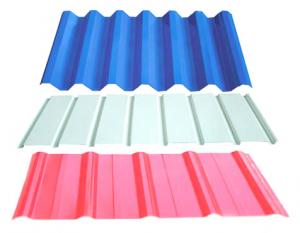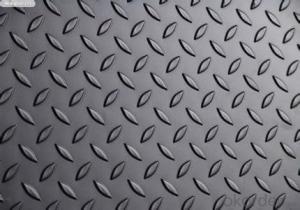corrugated color steel sheet DX51D
- Loading Port:
- China Main Port
- Payment Terms:
- TT OR LC
- Min Order Qty:
- -
- Supply Capability:
- -
OKorder Service Pledge
OKorder Financial Service
You Might Also Like
Quick Details
| Standard: | Grade: | Thickness: | |||
| Place of Origin: | Brand Name: | Model Number: | |||
| Type: | Technique: | Surface Treatment: | |||
| Application: | Width: | Length: |
Packaging & Delivery
| Packaging Detail: | Fully seaworthy export packing with paper tube Each coil is wrapped in water-proof paper.Pallet as your choosing . wooden pallet and steel pallet as your choosing |
| Delivery Detail: | about 15 days after the deposit if the quantity below 500 tons |
Specifications
1.Thickness: 0.15mm-1.0mm
2.Width:914mm-1250mm
3. z40-z275g/m2
4. Delivery time: about 15 working days
5.ISO 2000,
Suzhou Jincheng Metal Product Co., Ltd. |
PRODUCT:STEEL SHEET(GI,GL,CR,PREPAINTED,CORRUGATED)
MAIN SPECIFICATIONS:
1,Base Metal: COLD ROLLED(CR)
2,Zinc Coating: z40-z275,Az40-Az150
3,Thickness:0.15mm-4.0mm(GI),0.23mm-2.0mm(GL),0.15mm-3.0mm(CR),0.15mm-1.5mm(PREPAINTED),0.15mm-1.0mm(CORRUGATED)
4,Width:914mm-1250mm (before corruagting)
5,Length: according to your requirement (unit of measurement: Ton)
6,Paint Coating:22-25(um)
7,Color:RAL color or customized as the sample
8,Minimun order:25Tons
9,Packaging Details: Fully seaworthy export packing
10,Price Terms:Fob Shanghai,CIF,CF
- Q: What is the minimum thickness of steel sheets?
- The minimum thickness of steel sheets can vary depending on the specific application and industry standards. However, in general, steel sheets are typically available in thicknesses ranging from 0.4 millimeters to several millimeters.
- Q: What is the difference between a coated and uncoated stainless steel sheet?
- A coated stainless steel sheet refers to a stainless steel sheet that has been coated with a protective layer or finish, which could be a polymer or another material. This coating serves to enhance the sheet's resistance to corrosion, scratches, and other forms of damage. The coating also provides a decorative or aesthetic appeal, as it can come in different colors or textures. On the other hand, an uncoated stainless steel sheet refers to a stainless steel sheet that does not have any additional protective layer or finish. It is in its natural state, with its inherent properties and characteristics. Uncoated stainless steel sheets are known for their high resistance to corrosion, durability, and strength. They are commonly used in applications where their natural properties are sufficient to withstand the intended environment. The main difference between coated and uncoated stainless steel sheets lies in their protective properties and appearance. Coated stainless steel sheets offer an extra layer of protection against corrosion and damage, making them suitable for environments where there is a higher risk of exposure to harsh conditions or corrosive substances. They also provide a wider range of design options due to their variety of coatings. Uncoated stainless steel sheets, on the other hand, are preferred in applications where the natural properties of stainless steel are sufficient to meet the requirements. They are often used in architectural and structural applications, as well as in industries such as food processing, pharmaceuticals, and medical equipment, where hygiene and durability are essential. In summary, the difference between a coated and uncoated stainless steel sheet lies in the additional protective layer and aesthetic options offered by the coating. Coated stainless steel sheets provide enhanced resistance to corrosion and damage, as well as a wider range of design choices, while uncoated stainless steel sheets rely on their inherent properties for durability and strength. The choice between the two depends on the specific application and the desired balance between protection, aesthetics, and cost.
- Q: What are the different surface treatments for steel sheets?
- There are several different surface treatments available for steel sheets, each serving a specific purpose and providing unique benefits. Some of the common surface treatments for steel sheets include: 1. Hot-dip galvanizing: This process involves immersing the steel sheet in a bath of molten zinc, creating a protective layer on the surface. Hot-dip galvanizing provides excellent corrosion resistance and is commonly used in outdoor applications, such as roofing, fencing, and automotive parts. 2. Electroplating: In this process, a thin layer of metal is deposited onto the steel sheet using an electric current. Common metals used for electroplating include chromium, nickel, and zinc. Electroplating improves the appearance of the steel sheet, enhances corrosion resistance, and can provide additional properties like improved wear resistance. 3. Powder coating: Powder coating involves applying a dry powder to the steel sheet and then baking it to create a durable, smooth, and uniform finish. Powder coating provides excellent corrosion resistance, impact resistance, and can be applied in a wide range of colors and textures, making it popular for architectural, automotive, and appliance applications. 4. Painting: Applying a layer of paint to the steel sheet provides both aesthetic appeal and protection against corrosion. Different types of paints, such as epoxy, polyurethane, or acrylic, may be used depending on the desired appearance and environmental conditions. 5. Passivation: Passivation is a chemical treatment that removes impurities and contaminants from the steel surface, improving its corrosion resistance. This process is commonly used for stainless steel sheets to enhance their resistance to oxidation and staining. 6. Electropolishing: This treatment involves immersing the steel sheet in an electrolyte bath and applying an electric current to remove a thin layer of material from the surface. Electropolishing improves the surface finish of the steel sheet, making it smoother, brighter, and more resistant to corrosion. These are just a few examples of the various surface treatments available for steel sheets. The choice of treatment depends on factors such as the intended application, desired appearance, corrosion resistance requirements, and budget. Consulting with a steel sheet supplier or a surface treatment specialist can help determine the most suitable treatment for specific needs.
- Q: Can steel sheets be used for bulletproof applications?
- Yes, steel sheets can be used for bulletproof applications. Steel is a strong and durable material that can effectively stop bullets from penetrating through it. Bulletproof steel sheets are often used in the manufacturing of armored vehicles, military equipment, and personal protective gear such as bulletproof vests and helmets. The thickness and quality of the steel sheets play a crucial role in determining their bulletproof capabilities. Steel sheets can be designed to withstand different levels of ballistic protection, ranging from handguns to high-powered rifles. Additionally, steel's affordability and ease of production make it a popular choice for bulletproof applications in various industries.
- Q: Can steel sheets be used for electrical motors?
- Yes, steel sheets can be used for electrical motors. Steel is commonly used in the construction of electrical motors due to its magnetic properties. The sheets of steel are typically used to create the core of the motor, which is responsible for generating the magnetic field necessary for the motor's operation. Steel has a high magnetic permeability, which means it can easily conduct and channel magnetic flux, making it an ideal material for this purpose. Additionally, steel is durable and can withstand the high temperatures and mechanical stresses that electrical motors may experience during operation. Therefore, steel sheets are often chosen as a reliable and cost-effective option for constructing electrical motors.
- Q: Can steel sheets be used for chimneys and flue systems?
- No, steel sheets are not suitable for use in chimneys and flue systems as they cannot withstand high temperatures and are prone to corrosion.
- Q: The difference between steel edge sealing strip and steel plate putty water stop belt
- The steel sealing strip is made of pure steel plate and can be divided into galvanized steel sheet, ordinary steel plate and stainless steel water stop belt.The steel plate putty water stop belt is covered with butyl rubber. The main material is a kind of rubber and plastic material with good aging resistance. It has a strong self adhesion, and it does not run in summer. Low temperature in winter, no brittle, and has excellent water, acid and alkali resistance and aging resistance, long service life, the product itself non-toxic, good environment. In order to withstand certain bending and pressure. There are 0.4 or 0.6mm steel plates in the center. The steel plate putty water stopping belt can provide reliable waterproof and anti-seepage function to the building joint. Steel plate putty water stop series products include various specifications and types of products, and can produce various types of steel sheet, putty, water stop belt according to user requirements, to meet the actual needs of the project.
- Q: Can steel sheets be used for bridge construction?
- Yes, steel sheets can be used for bridge construction. Steel is a widely used material in bridge construction due to its strength, durability, and ability to withstand heavy loads. Steel sheets are often used to create the structural framework of bridge beams and girders, providing the necessary support for the bridge's weight and traffic. Additionally, steel sheets offer flexibility in design, allowing for different shapes and sizes to meet specific bridge requirements. Overall, steel sheets are a popular choice in modern bridge construction due to their reliability and cost-effectiveness.
- Q: Can steel sheets be used for staircases?
- Yes, steel sheets can be used for staircases. Steel sheets are often used in the construction of staircases due to their durability, strength, and resistance to wear and tear. They can be molded and shaped into various designs to create aesthetically pleasing staircases while providing a sturdy and long-lasting structure.
- Q: Can the steel surface be made of epoxy resin flooring?
- According to the characteristics of epoxy resin, it should be possible
Send your message to us
corrugated color steel sheet DX51D
- Loading Port:
- China Main Port
- Payment Terms:
- TT OR LC
- Min Order Qty:
- -
- Supply Capability:
- -
OKorder Service Pledge
OKorder Financial Service
Similar products
Hot products
Hot Searches
Related keywords
